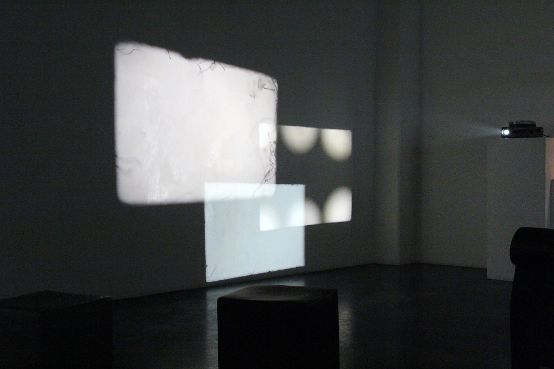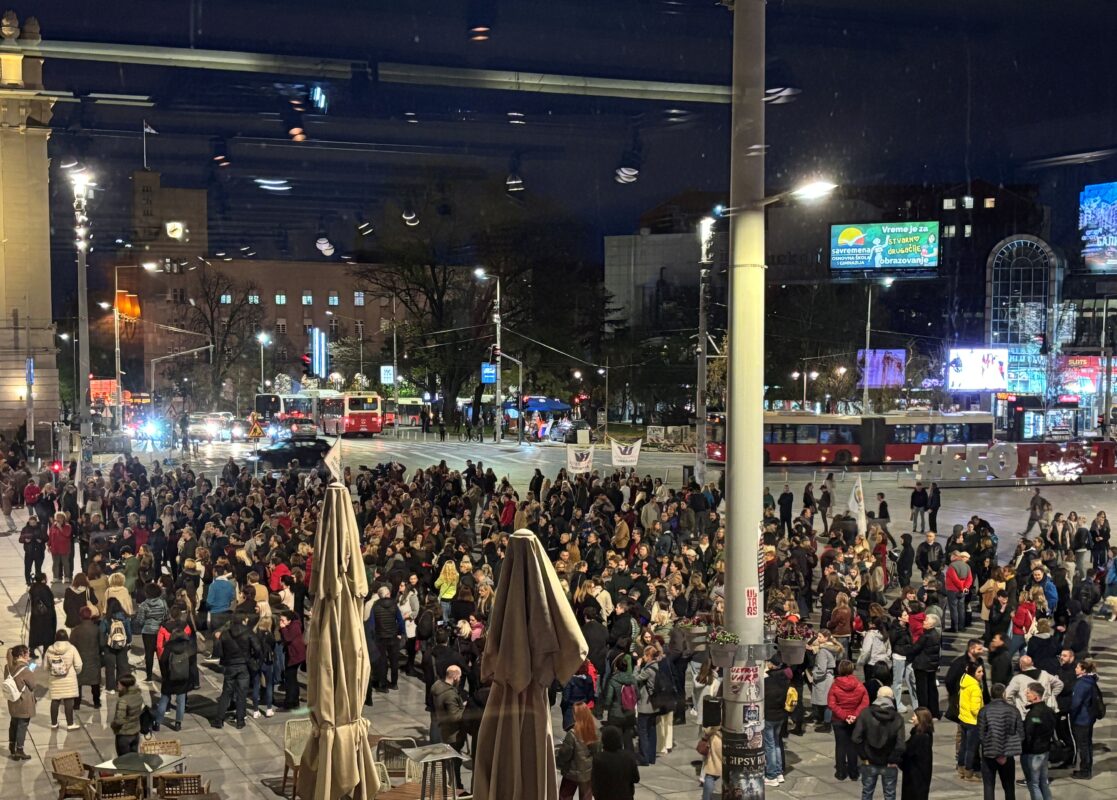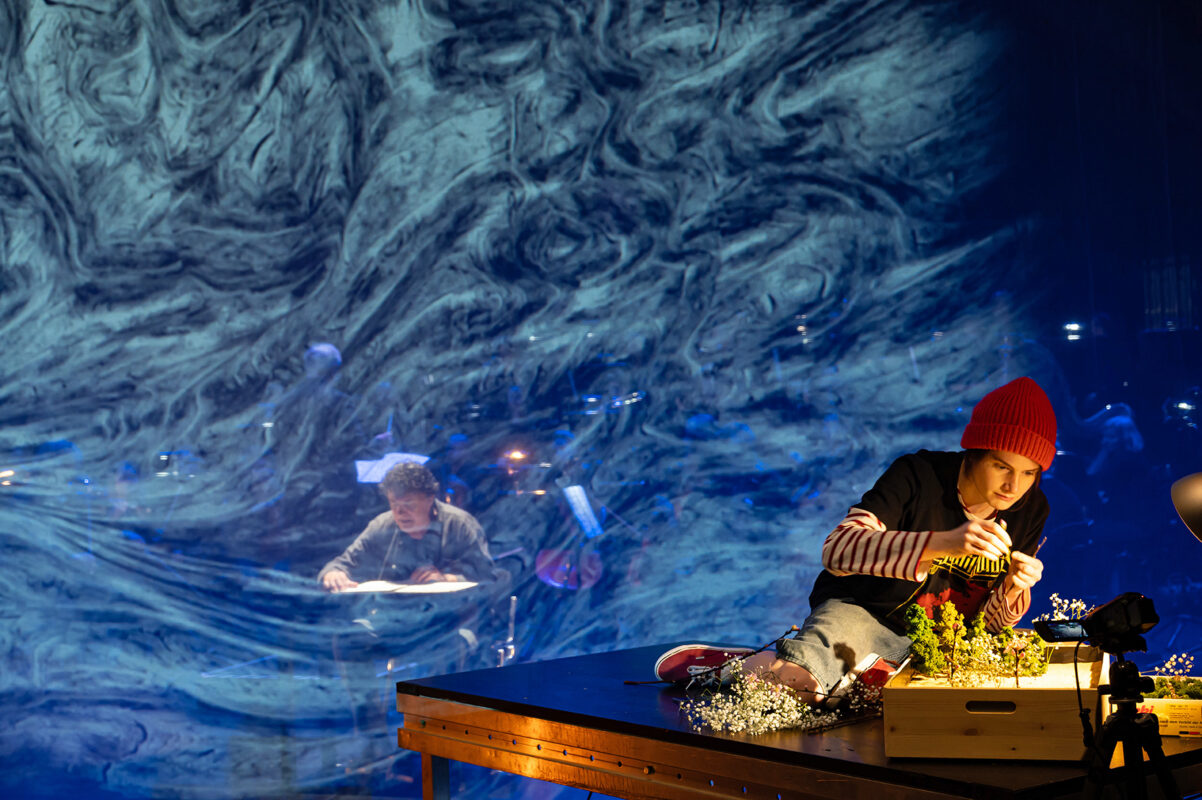Contemporary melancholy
The 53rd Wittener Tage für neue Kammermusik brought some contributions from Switzerland.

There's something about it: a creaky, metallic electric guitar goes well with Witten an der Ruhr - and therefore also with the Ruhr region, where a lot of hard work was done, where the machines once ran hot and steel production was very important. The Austrian composer Klaus Lang wrote the sounds for this audiovisual piece called nowhere.Sabine Maier, a light artist, devised a discreet installation using old slide projectors, whose vents whir charmingly into the music. Distorted guitar sounds here, outdated projection technology there: at first, it sounds like nostalgia, like a throwback to beautifully analog times. But things turn out differently: this sonically fascinating nowhere. increasingly unfolds a less harsh, rather very soft, almost contemplative and timeless atmosphere.
Sabine Maier and Klaus Lang are not presenting their audiovisual collaborative work on stage. They created a "Corona-compliant film version" in a model and played the pre-recorded music. In line with the pandemic, i.e. without an audience, the Witten Days to. Twelve hours of the world premiere program were pre-produced in Paris, Cologne, Stuttgart and Witten; festival director Harry Vogt and his team will show everything bundled together on three online evenings lasting several hours from Friday to Sunday. At the beginning of March, Vogt was still hoping for the 53rd year with an audience, but after the sobering news of the lockdown, he had to rethink a lot of things. A radio presentation of installations in Witten's Schwesternpark, which served as a natural recreation area for deaconesses from the neighboring Protestant hospital at the beginning of the 20th century, proved difficult to implement.
Goodbye nature
The Swiss composer and sound artist Mauro Hertig is inspired by the park. Perhaps he thought that there was already enough death and destruction in the history of music, from Don Carlo Gesualdo to Johann Sebastian Bach and György Ligeti's Requiem. So Hertig begins in Mum Hum does not start at the end of life, but virtually from scratch, or more precisely: with the idea of what sounds a fetus might be exposed to in its mother's womb. All kinds of verbal and instrumental sounds can be heard in the online radio version. Unfortunately, apparently not in the form that was intended on site in the nurses' park: with corded telephones. These would have allowed the character of the high-pitched bubbling or gurgling to emerge more clearly. So it remains "HiFi instead of LoFi" - but still provides an insight into the inspired workshop of Hertig, who was born in 1989 and studied at the Zurich University of the Arts.
Also Daniel Ott had been at Nurse Park Fragments (2021) presented a beautiful environment. Here a mobile steel drum, there a wandering trumpet, plus loudspeakers hidden in the trees with choral singing - the well thought-out examination of the landscape architecture of the English garden sounds promising. But here, too, the audio-only version cuts back on the essentials: the free contemplation in the Wittener Schwesternpark, the unfolding of the sounds in the space, even the experience of Ott's tonal changes of perspective through the movement of the performers is almost painfully neglected. Installations that are close to nature, especially site-specific installations, simply elude a radio presentation, no matter how well-intentioned and well-made. It simply tastes stale.
The online presentation of the Witten concerts is better. As part of the traditional focus on portraits, the French composer and performer Brice Pauset his impressive skills. On a hundred-year-old fortepiano, he plays excerpts from his new series of works with tremendous sound sensitivity Minutes for piano. Historical retrospections are frequent in this 53rd year of the Wittener Tage für neue Kammermusik, including in the case of the 1978 Rapperswil-born Michael Pelzelwho works as an organist in Stäfa on Lake Zurich. Pelzel remembers his youth, when he listened to a lot of Pink Floyd, especially the album Dark side of the moon. It sounds two-dimensional and monochrome, yet very dense and concentrated in his ensemble piece Dark side of Telesto. The use of many gongs lends the work a floating quality and an unmistakably melancholy note. Pelzel may not have been thinking of a musical response to the current coronavirus situation. But the dark work does seem contemporary.








